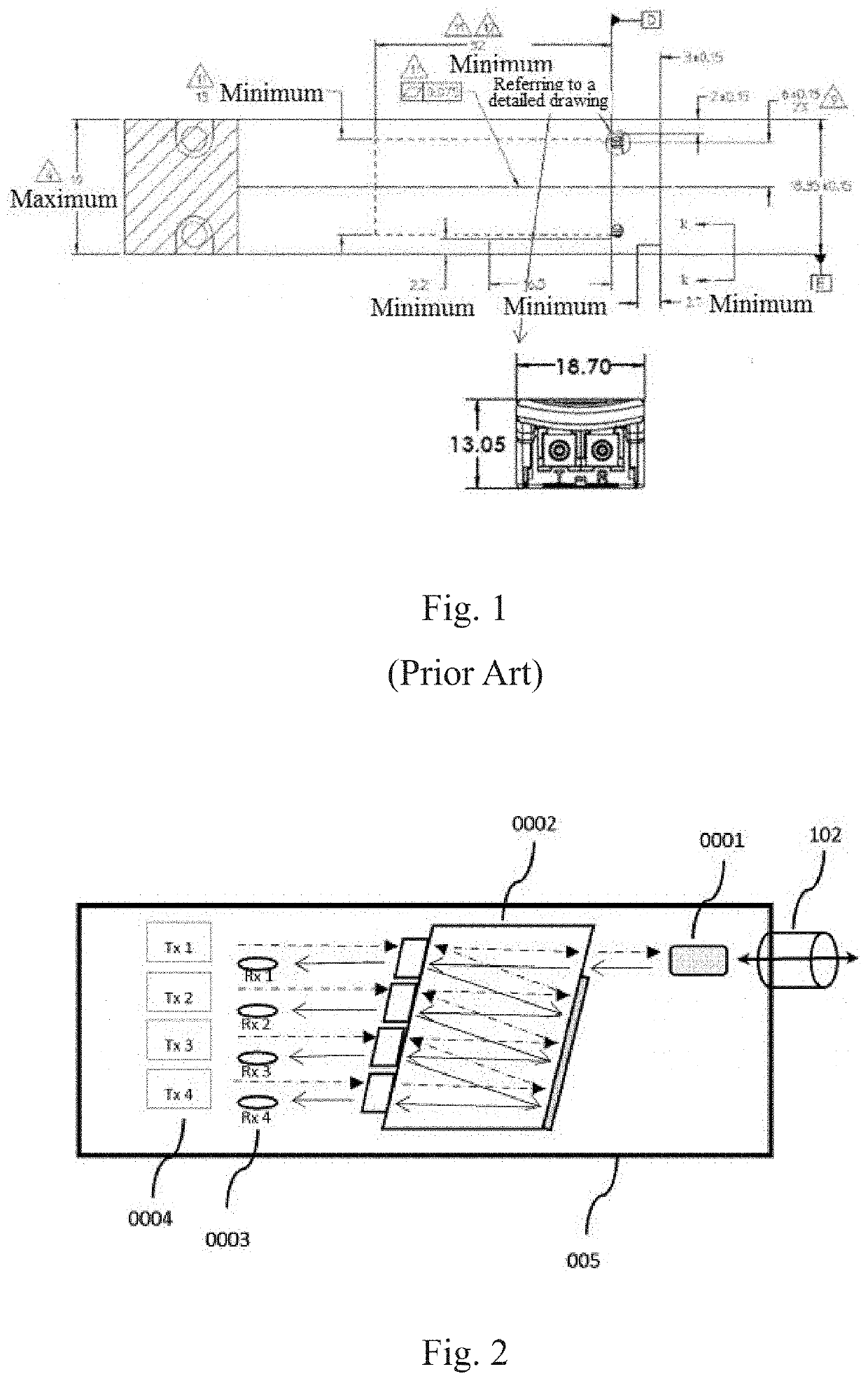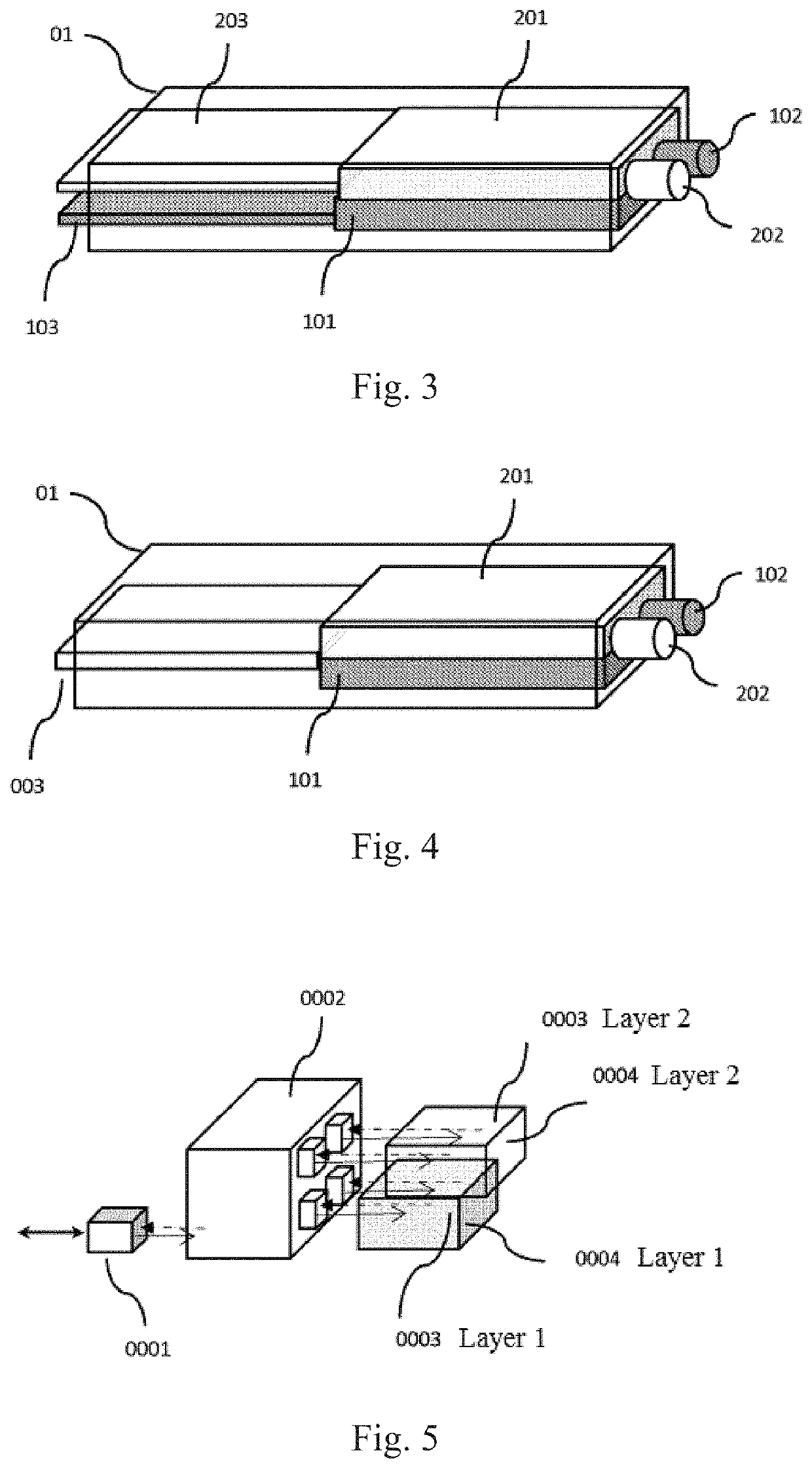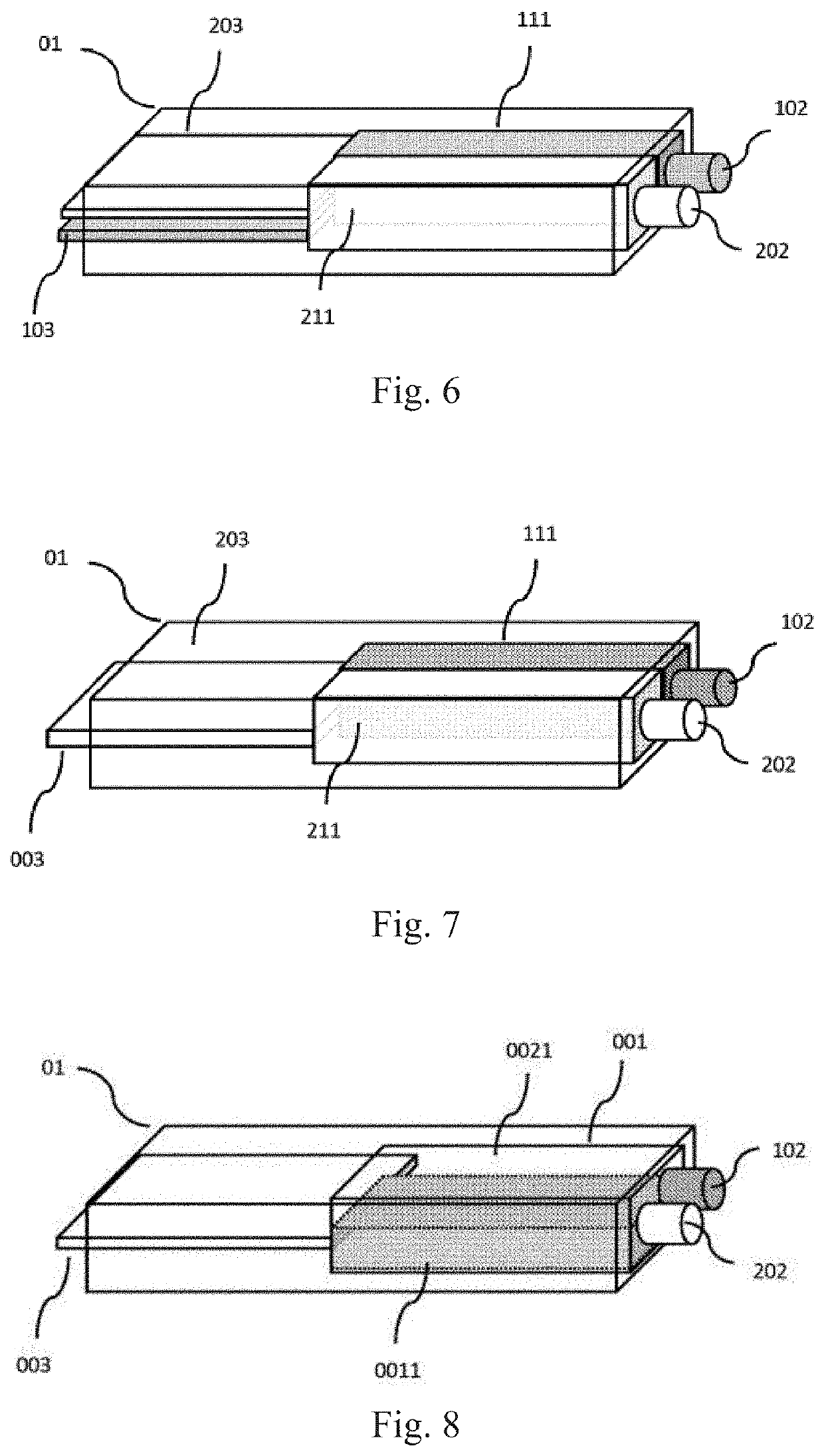Transceiver with multi-wavelength coexistence
- Summary
- Abstract
- Description
- Claims
- Application Information
AI Technical Summary
Benefits of technology
Problems solved by technology
Method used
Image
Examples
Embodiment Construction
[0027]In order to better understand and explain the present invention, the present invention will be further described with accompanying drawings in detail.
[0028]FIG. 2 is a structurally schematic view of a BOSA (bi-direction optical sub-assembly) which is able to be stacked vertically in a transceiver housing provided by the present invention. Currently, a transceiver with QSFP (quad small form-factor pluggable) package size generally adopts a free space micro-optical device or a planar optical waveguide device to realize a function of internal MUX / deMUX in an OSA. Here, OSA is an abbreviation for optical sub-assembly. If the OSA only has light transmitting function, it is called TOSA (transmitter optical sub-assembly); if the OSA only has light receiving function, it is called ROSA (receiver optical sub-assembly). Moreover, when the OSA has both light transmitting and receiving functions on a single optical interface, it is called BOSA (bi-direction optical sub-assembly).
[0029]As ...
PUM
 Login to View More
Login to View More Abstract
Description
Claims
Application Information
 Login to View More
Login to View More - R&D
- Intellectual Property
- Life Sciences
- Materials
- Tech Scout
- Unparalleled Data Quality
- Higher Quality Content
- 60% Fewer Hallucinations
Browse by: Latest US Patents, China's latest patents, Technical Efficacy Thesaurus, Application Domain, Technology Topic, Popular Technical Reports.
© 2025 PatSnap. All rights reserved.Legal|Privacy policy|Modern Slavery Act Transparency Statement|Sitemap|About US| Contact US: help@patsnap.com



